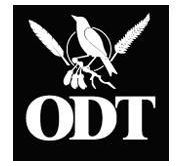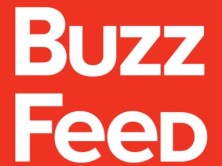
(Credit: Unsplash via Pixabay)
Readers were shocked after daily Pennsylvania newspaper The Sharon Herald published an insensitive and gratuitous story that horrifically detailed a local man’s death by suicide. “I’m disgusted with a newspaper that has no respect for human life…most especially my son’s life,” the man’s mother told iMediaEthics.
“This is a great example of how not to report a suicide death,” Ken Norton, executive director of the National Alliance for Mental Illness, New Hampshire, told iMediaEthics by e-mail.
Experts and scientific literature agree that the April 4 article shatters basic industry best practices for the ethics of reporting on suicide. Graphic details included the temperature and condition of the deceased, how the death occurred, and the dredging up of the man’s old legal run-in and mental illness.
News outlets have a significant responsibility to carefully report on suicide deaths because unnecessarily detailed and insensitive news reports on suicides can risk causing additional deaths by suicide — the contagion factor. Suicide is a health crisis, with the U.S. National Center for Health Statistics revealing April 22 that suicide rates in this country are at their highest since 1986.
Families and friends of the deceased also suffer from such insensitivity, adding to their loss.
The article’s graphic description of the man’s death continues to haunt his grieving mother’s mind. “I’m hurt,” she told iMediaEthics. “I’m angry. I’m disgusted.”
Mother of Deceased: ‘I’m Hurt. I’m Angry, I’m Disgusted.’
Joseph Koscinski died by suicide April 3 at the age of 41, leaving behind many loved ones.
The Society of Professional Journalists’ ethics code advises journalists to “minimize harm” and “show compassion for those who may be affected by news coverage.”
But on the contrary, the Herald‘s news article on his death likely did more harm to both the family of the man who died and those affected by mental illness.
“I’m so devastated that they would be so insensitive as to drum up painful incidents from the past that we had worked so hard to put behind us…all to sell papers,” Koscinski’s mother, Betty Koscinski, told iMediaEthics. “I’m hurt. I’m angry, I’m disgusted with a newspaper that has no respect for human life…most especially my son’s life.”
“Losing a son to suicide is painful enough for anyone without adding total disregard to his memory and our family,” she added.
In a later message, days after her son’s funeral, Koscinski wrote from the heart about the pain of losing her son and the further pain of his death being exploited by the Herald.
“It doesn’t get any easier, and in some ways, it only gets harder with sleepless nights and awakening in the morning to the reality that Joe is really gone,” she e-mailed iMediaEthics. “The grief I deal with every day does not compare to the anger, hurt and even rage that I’m trying to process because of The Herald‘s gruesome and insensitive detailed description of my son’s death.”
One of the most strikingly insensitive things about the Herald‘s article is the level of detail that paints a picture of Koscinski’s son’s death.
The description the Herald published remains in her mind. “Because of them I have clear and vivid picture in my head” of her son’s last actions and death, she says. “How do I make the thoughts go away? Will they ever go away? I feel like they stripped him of his humanity with no regard for him as a person who was loved by so many.”
In addition to the invasive descriptions, the Herald also featured, high up in its story, a past altercation involving Koscinski, complete with quotes from a judge about his mental illness.
At the time of that incident two years ago, the Herald sensationalized the story, Koscinski told iMediaEthics, and made things worse by again hashing out her son’s history in the press. “As if that were not painful enough to smear the Koscinski name all over the paper, they took this opportunity to dig up that painful tragedy and reprint it again, almost verbatim,” Koscinski said. “They must be so desperate for news.”
The Herald‘s readers agreed that the newspaper went too far. On Facebook and in the article’s comments, readers slammed the Herald for poor taste. Below, see a sampling of comments:
- “The Herald has no compassion for a human life. There was no need for the details given in this article.”
- “Were the friends and family of this man ever taken into onsideration before putting out this story?”
- “The Sharon Herald‘s report on this event was nothing short of despicable! Are the people at The Herald so hardened that they don’t even stop to think about what their article is going to put the man’s family and loved ones through?”
- “I grew up two houses down from Joe and his family.. Joe deserves better than this article, Joe’s family deserves better than this article. Hell, anyone in this situation would deserve better. Completely disgusted.”
- “I am totally appalled by this news article. Have you no remorse for the loved ones of Joey.”
- “The Sharon Herald didn’t think to take this story in a different direction and seize the opportunity to offer advice to others in our community may be affected by mental illness?”
- “I have warned close friends of his to avoid reading it because it was so upsetting.”
Story Didn’t Just Hurt Koscinskis, but Showed ‘Blatant Disregard’ for Mental Illness, Mother Says
The graphic story on Koscinski’s death and battle with mental illness didn’t just hurt her family, Mrs. Koscinski thinks. “Without a doubt it was the most blatant disregard not just for my son’s life, but a blatant disregard for ALL people who suffer with mental illness and it further added to the already sad and inaccurate stigma associated with mental illness,” she wrote to iMediaEthics.
“People with mental illness are not crazy. They are people who got dealt an unfair card in life; a chemical imbalance in their brains which often results in a multitude of painful symptoms from depression, to mania, to psychotic thoughts and even voices that won’t ago away. The Herald‘s insensitively to my son as a person with real feelings and all those who suffer with mental illness is beyond wrong. It is an atrocity!”
Koscinski called for the newspaper to apologize to her family and the community for its poor judgment and exploitative coverage. “The Herald not only owes my family an apology, but we deserve a Front Page apology addressed to us and the community who rallied around us in our time of need.”
The Sharon Herald‘s publisher, Sharon Sorg, told iMediaEthics by e-mail:
“When it comes to reporting suicides our policy is to report suicides when either it involves a public official or when the suicide is committed in public and requires first responders to the scene. The Koscinski suicide was reported for the latter reason. Were all of the details that were reported necessary, probably not. We have reaffirmed with our newsroom staff the need to be more aware of what details we do and do not need to include.”
iMediaEthics also contacted the two reporters on the story, Joe Pinchot and Melissa Klaric, several times over e-mail. In our e-mails to Pinchot and Klaric, which copied Sorg, we asked if any editors signed off on the story before publication, how many complaints the paper received, if the paper would apologize or respond to our criticism and if the paper was familiar with the basic standards for reporting on suicide or the SPJ’s ethics code.
iMediaEthics also called the paper and asked to speak to the reporters, editor and publisher. Reporter Joe Wiercinski said the new editor for the paper had not been assigned yet. “We are between editors” as the “long-timer” was being replaced in the past couple of weeks. He said the publisher, Sorg, was acting as editor and that policy dictates the reporters wouldn’t be able to comment and only the publisher could.
How to Report on Suicide
Andrew M. Seaman, ethics chair for the Society of Professional Journalists, told iMediaEthics, “It definitely goes beyond what you would expect or hope an article on an event like this would be.”
He agreed with iMediaEthics that it’s fair to report on a suicide if it’s in a public place or impacts the public. “If there’s a suicide in a public place…you wouldn’t want media to ignore it, but at the same time you don’t want to pander to what the code of ethics calls the prurient interest or really use language that would cause harm,” such as the vivid descriptions the Herald used.
Seaman suggested reporters covering suicide “think about how the family is going to feel, does the public need this info, what it’s going to cause the surviving members of the family,” before publishing stories.
The newspaper should have contextualized its reporting, for example, by instead of focusing on the details of the death, focusing on telling readers who Koscinski was or even not mentioning Koscinski’s name at first, Seaman said. “I think you need to spend a lot of time and care putting this into context.”
Instead the article “seemed like what could be pieced together with as much detail as possible,” Seaman said. “It didn’t help, it probably hurt,” Seaman commented, reminding that just because something is available doesn’t mean journalists should publish it.
When covering deaths or suicides, Seaman advises journalists take care in reporting to tell readers what “that person was like when they were alive since you’re painting a picture that will remain online going forward.”
He also advises journalists contact experts on suicide or mental health, or even victims’ rights advocates.
Ken Norton, the executive director for the National Alliance on Mental Illness, New Hampshire, told
iMediaEthics in a phone interview that “all of the graphic details are very inappropriate.”
An “ideal story” would focus on suicide prevention or inform readers how they can get help, like including the hotline for National Suicide Prevention, 1-800-273-8255, which can connect people in need of help with local crisis centers. “Suicide is generally preventable when people know what the warning signs are and what is available for local mental health resources,” he said.
“One of the things we know is that research has demonstrated over and over again in the U.S., as well as internationally, that there is such a thing as suicide contagion,” Ken Norton, the executive director for the National Alliance on Mental Illness, New Hampshire, explained. “People who may be at risk for suicide or who may be contemplating suicide can be impacted by the suicide death or suicidal behavior of another individual.”
This is unique to suicide, he said, because “there’s no evidence that that occurs with DWI, for instance, or other types of high-profile behavior. And that connection to contagion is fairly well-documented as to how the media covers suicide. That’s why there are national and international recommendations that are quite clear about not covering suicide in the way this story was covered.”
Norton pointed not just to the best practices for reporting on suicide but also just basic sensibilities in not including such graphic information and imagery.
In addition, Norton noted that in 2013, the Associated Press advised the media to report on mental illness with care.
“When is such information relevant to a story? Who is an authoritative source for a person’s illness, diagnosis and treatment? These are very delicate issues and this Stylebook entry is intended to help journalists work through them thoughtfully, accurately and fairly,” AP Senior Vice President and Executive Editor Kathleen Carroll said at the time.
In 2015, the AP added guidelines for reporting on suicide, explaining: “Generally, AP does not cover suicides or suicide attempts, unless the person involved is a well-known figure or the circumstances are particularly unusual or publicly disruptive. Suicide stories, when written, should not go into detail on methods used.”
Amy Kulp from the American Association of Suicidology told iMediaEthics by e-mail, “Scientific research studies have found that certain types of news coverage of suicide deaths, including graphic images, method of suicide, etc., can increase the likelihood of suicide in vulnerable individuals. Conversely, responsible coverage of suicide can encourage those at risk to seek help.”
Citations for those studies are on the reportingonsuicide.org website, Kulp said.
She also referred us to the association’s guidelines for responsible reporting, which state:
“Risk of additional suicides increases when the story explicitly describes the suicide method, uses dramatic/graphic headlines or images, and repeated/extensive coverage sensationalizes or glamorizes a death.”
UPDATED: 4/23/2016 3:35 PM EST To add in the efforts iMediaEthics made to contact the newspaper.





